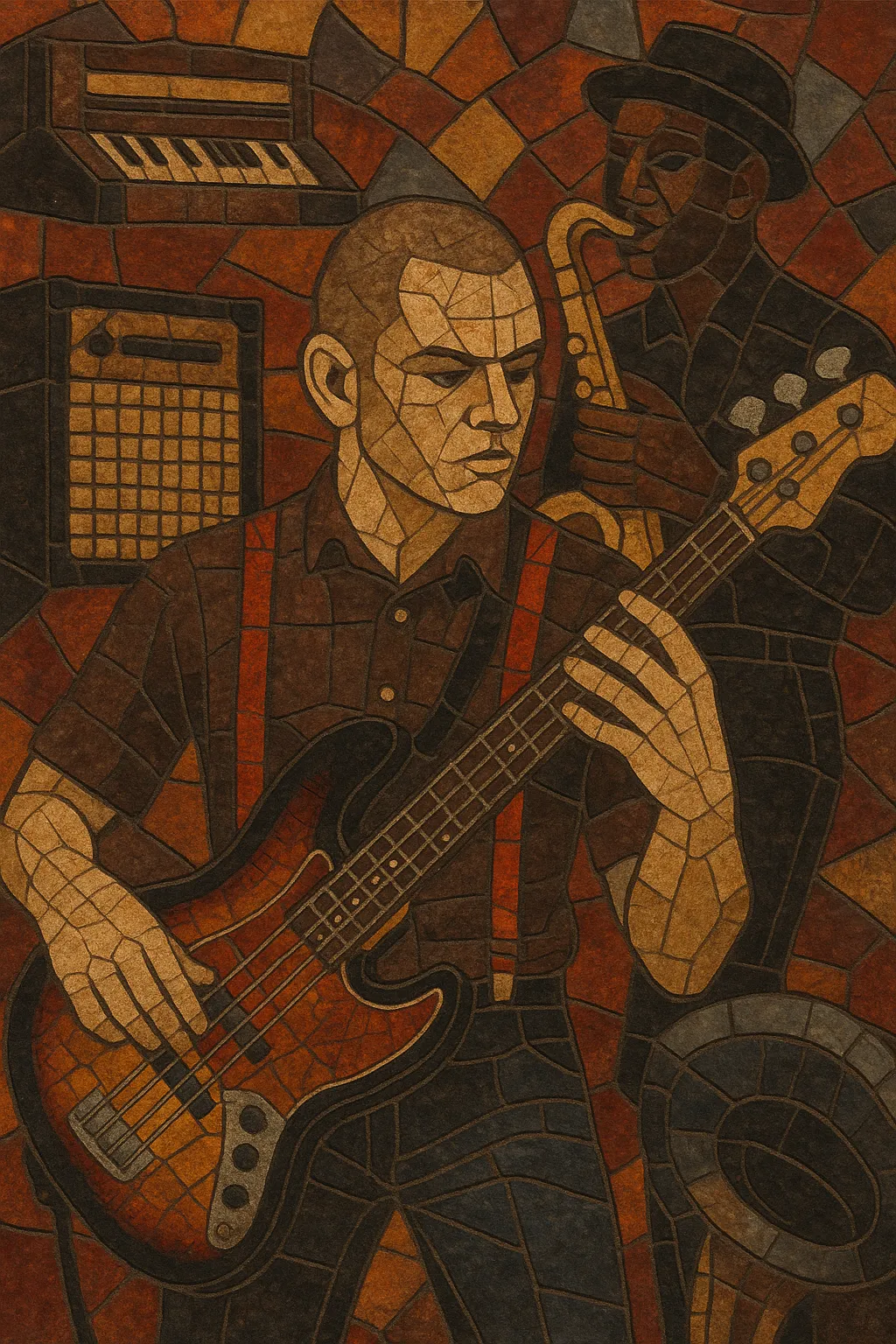Skinhead reggae (often called "boss reggae") is the fast, hard-grooving early form of reggae that surged from Jamaica in the late 1960s and became the soundtrack of the first wave of British skinheads. It bridges ska and rocksteady with the new reggae beat, favoring punchy rhythms, bright Hammond organ "bubble," crisp rhythm guitar offbeats, deep bouncy bass lines, and concise horn riffs.
Compared to later roots reggae, skinhead reggae is more uptempo, dancefloor-ready, and less dub-oriented—designed for sound systems and youth clubs. Lyrical themes range from rude boy narratives and everyday life to party chants and infectious call-and-response hooks.
Skinhead reggae emerged in Jamaica at the turn of the ska-to-reggae transition. As rocksteady slowed the ska tempo and foregrounded bass, producers and bands refined the groove into the new reggae beat. The result—sometimes called "boss reggae"—kept a sharper, driving feel than later roots styles: brisk tempos, organ shuffle (the "bubble"), and punchy horns tailored to sound system dances.
Jamaican migrants, labels (notably Trojan Records), and independent shops funneled these singles into the United Kingdom, where working-class youths—the early skinheads—embraced the music around 1968–1971. Danceable, tough, and unpretentious, it matched the fashion and social spaces of the scene. Charting UK hits by Jamaican artists (e.g., The Pioneers, Desmond Dekker, Dave & Ansel Collins) made the sound a mainstream presence while remaining a club staple.
The style emphasized a tight rhythm section: choppy guitar skank on the offbeats, a bubbling Hammond organ pattern, melodic yet driving bass lines, and straightforward, snare-forward drum patterns. Arrangements tended to be concise, hook-led, and horn-accented, with less studio experimentation than later dub.
By the early 1970s, reggae diversified into roots and dub, and UK tastes shifted. Yet skinhead reggae laid the foundation for successive British ska revivals—most notably the 2 Tone movement—and influenced punk-adjacent street sounds. Periodic revivals and reissues have cemented its status as a dancefloor-ready, historically pivotal link between ska, rocksteady, and later reggae and ska-punk hybrids.


